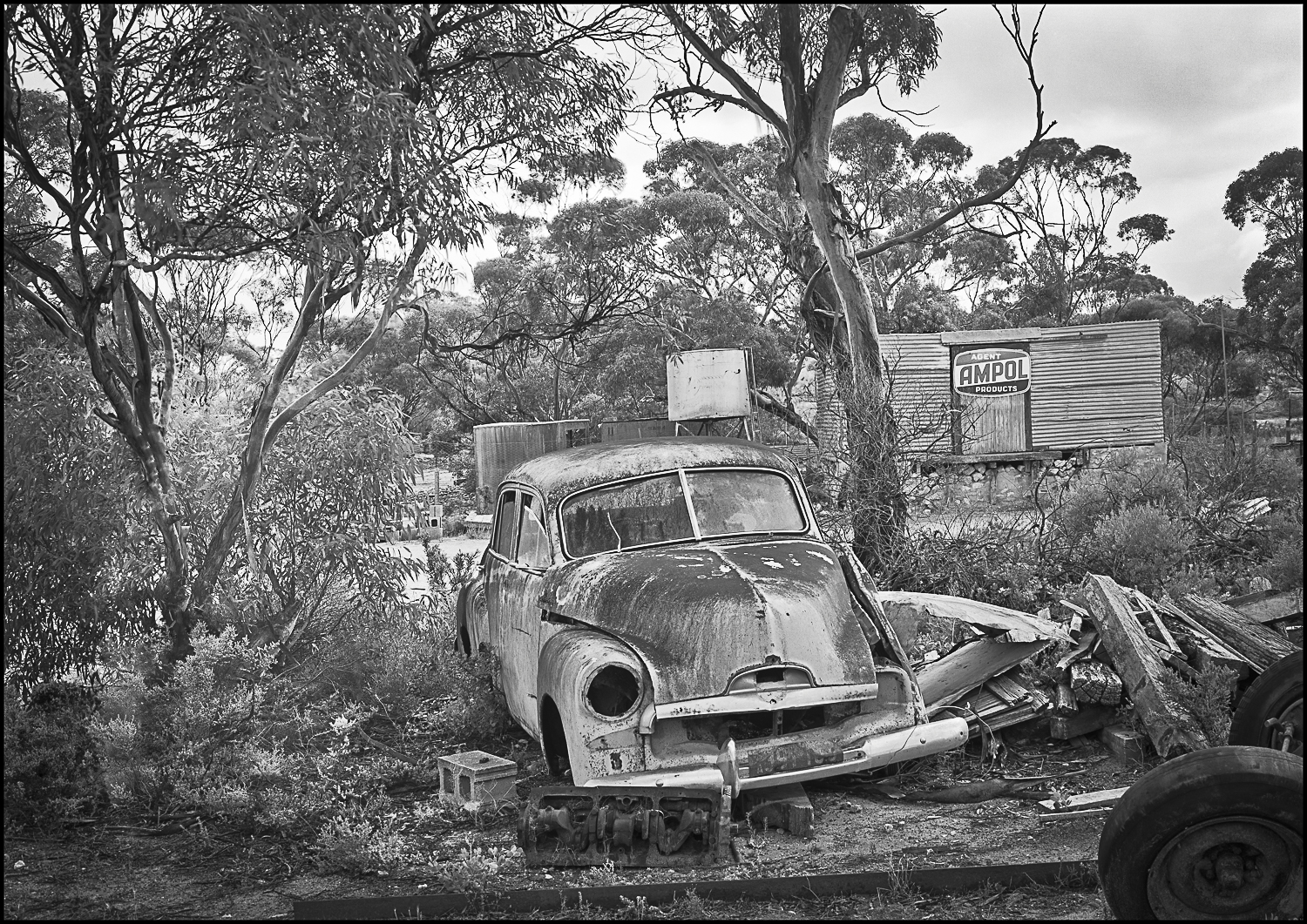Like the two other images from the Mantung photoshoot in the South Australian Mallee in the early 1990s this image was also made with a Cambo 5×7 monorail and Kodak black and white Tri-X film.
This image was made about the time that photography, whether as historical object or professional practice, was becoming fully institutionalised; that is in the process of finding a secure niche in universities, art schools, art museums, and the marketplace, as well as in the culture at large.
This photograph provides a scene as opposed to a narrative; a scene that is always from the past and that has to be read like a tableau or a panorama, with the gaze moving across the plane of view in different directions, back and forward. This kind of viewing incorporates the past into the present. It suggests that photography simultaneously conjures past, present, and future in a single image form.
The image is of objects and settings left by humans as traces of their existence in the Mallee country of South Australia; an image of historical decay and the ruins of a mode of life. How then do we read or interpret this image?
Roland Barthes in Camera Lucida says that how the photographic image is read depends on “the co-presence of two discontinuous elements”: the studium and the punctum. The typical meaning of the image as a cultural object, the “average effect”, or ordinary meaning of the photograph, which is the product of the reader’s education within a particular culture, identifies the stadium. It is at the level of the studium that the photograph takes up a relation with society; to inform, to represent, to surprise, to cause to signify, to provoke desire.
For Barthes the photograph comes alive, becomes a matter of love and passion, only when a detail or a fragment interrupts, disturbs or stands out from the image. This is the punctum: a feature of the photograph which punctuates or punctures the stadium. The punctum is a quality discovered by the reader/viewer alone: the accidental, the coincidental, the “spark of contingency” within the image which ‘pricks’ the reader.
To respond to the punctum, there must be an openness to the photograph which, based on the viewer’s own particular interests and aesthetic concerns, leads to a personal, idiosyncratic reaction. The punctum, Barthes proposes, is an element of a picture that evades analysis —very often an incidental detail (he mentions several examples), an uncoded aspect of the photograph that is sometimes recalled in memory or even transformed by memory.

3 Responses
s2art
Gary, I think you would enjoy, Batchen’s reflections on Barthes. I have a book by Batchen entitled, Photography Degree Zero, it is a good read, although I’ve yet to read it in its entirety. Here’s a link to the amazon copy, I will try and dig up an electronic version. https://www.amazon.com/Photography-Degree-Zero-Reflections-Barthess/dp/0262516667/ref=sr_1_1?ie=UTF8&qid=1477625849&sr=8-1&keywords=photography+degree+zero
Gary
Thanks for the link Stuart. I didn’t know about this book. I have found something –this (https://mitpress.mit.edu/sites/default/files/titles/content/9780262013253_sch_0001.pdf), which is Batchen’s introduction to the Photography Degree Zero book.
Roadtrips: Andamooka – The Bowden Archives and Other Marginalia
[…] Port Adelaide, trips to Victor Harbor (and Kangaroo Island), and the Mt Lofty Ranges, trips to the South Australian Mallee and the mid-north, and ones along the River Murray to Melbourne and the east coast of […]